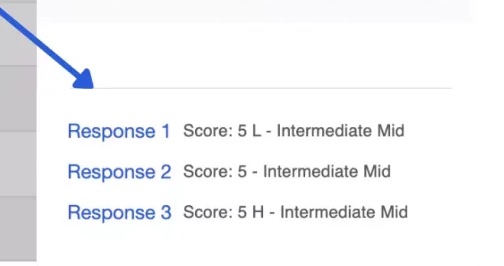Updated: September 2023
Standards ensure the consistent measure of one or more skills and guide educators in the best teaching and learning practices and tools. The Avant STAMP language assessment was designed to meet the need for a measurement of language proficiency based on the standards outlined in the ACTFL Proficiency Guidelines. “STAMP” stands for “STAndards-based Measurement of Proficiency”.
What are the ACTFL Proficiency Guidelines and Levels?
The Proficiency Guidelines make up the framework that is used to establish the world language learning standards in the U.S.
Distinguished: At the Distinguished proficiency level an individual can communicate highly complex concepts and global issues in a culturally appropriate manner. They are educated, and articulate and can customize their language to a situation and audience.
Superior: At the Superior proficiency level an individual is fully participatory and communicates with accuracy and fluency. An individual at a superior level can extensively discuss abstract topics with supporting opinions and structured arguments.
Advanced: At the Advanced proficiency level an individual can narrate and describe in past, present and future time frames. They can communicate in paragraphs on complex situations or topics and can handle an unexpected complication with grammatical accuracy and fluency.
Intermediate: At the Intermediate proficiency level an individual can create original strings of sentences by recombining learned material. They can ask and answer questions about familiar topics as well as handle simple transactions.
Novice: At the Novice proficiency level an individual is limited to communicating with short memorized phrases at the word level. It may be difficult for novice language learner to communicate with native speakers unaccustomed to non-native language.
How does the Avant STAMP Demonstrate Results Across all Levels and Sublevels?
Avant STAMP measures the three main ACTFL Proficiency Guidelines levels Novice, Intermediate, and Advanced, and the three sublevels of Low, Mid, and High. Low (L) and High (H) indicators for each Writing and Speaking response may appear next to the result to give testing coordinators and teachers a better understanding of the range of responses that can occur in each sublevel for an individual test taker. See Figure 1. This serves a similar purpose to the scaled scores of 200 to 800 for the Listening and Reading sections based on psychometric analysis of testing data.
On the Avant STAMP individual test report, an additional shaded area will appear if the test taker had one response that rated at a higher level. See Figure 2.This serves as an alert that the test taker is operating across a range of proficiency levels with this skill. This situation is quite common for test takers in the Novice and Intermediate ranges, mostly due to limited topic exposure and control.


How the Avant STAMP Aligns with the World-Readiness Standards for Language Learning
The World-Readiness Standards for Language Learning, just like the ACTFL Proficiency Guidelines, are defined as having three sublevels of Low, Mid, and High for each of the levels of Novice, Intermediate, and Advanced. The World-Readiness Standards for Language Learning list three categories of skills:
- Interpersonal (speaking-listening or writing-reading)
- Interpretive (reading, listening, viewing)
- Presentational (writing, speaking, visually representing)
The Avant STAMP is directly aligned to these levels and all STAMP reports use this language to assist in identifying test taker ability.
Interpersonal Communication – What is it? Can it be Assessed in a Computer-Based Assessment?
In the speaking section of Avant STAMP, test takers produce language after reading or listening to prompts from a conversational setting. We do this because our research has shown that this is the most effective way to obtain responses that are sufficient in length to demonstrate the higher-level language skills defined in the Intermediate and Advanced levels according to the ACTFL Proficiency Guidelines. Some people have told us that they think Avant STAMP does not align with these standards because STAMP does not include an Interpersonal Speaking section. To answer that question we must first ask – what is interpersonal communication?
What is the First Descriptor of Interpersonal Speaking from the World-Readiness Standards for Language Learning?
“Interpersonal Communication – Interact and negotiate meaning in spoken, signed, or written conversations to share information, reactions, feelings, and opinions.”
“Negotiate meaning” is the essence of interpersonal communication. Even with an avatar or mock interview, it is just not possible to negotiate meaning in a computer-based test with today’s technology. Meaning, it is not possible to assess interpersonal communication with a computer-based assessment. Avant agrees that Interpersonal communication is a critically important skill, but true interpersonal communication can only be assessed through a human-to-human interview or synchronous exchange of writing (text messaging for example).
How Valid is the Rating of Avant STAMP Speaking and Writing Responses?
The measure of quality in assessing the productive skills of Speaking and Writing is the consistent and accurate rating of test taker responses. Avant’s rater training processes, certification, and rater management software are core to the quality of Avant STAMP. Avant developed both the software and the rater training more than 20 years ago and continues to improve these for the delivery of Avant STAMP.



